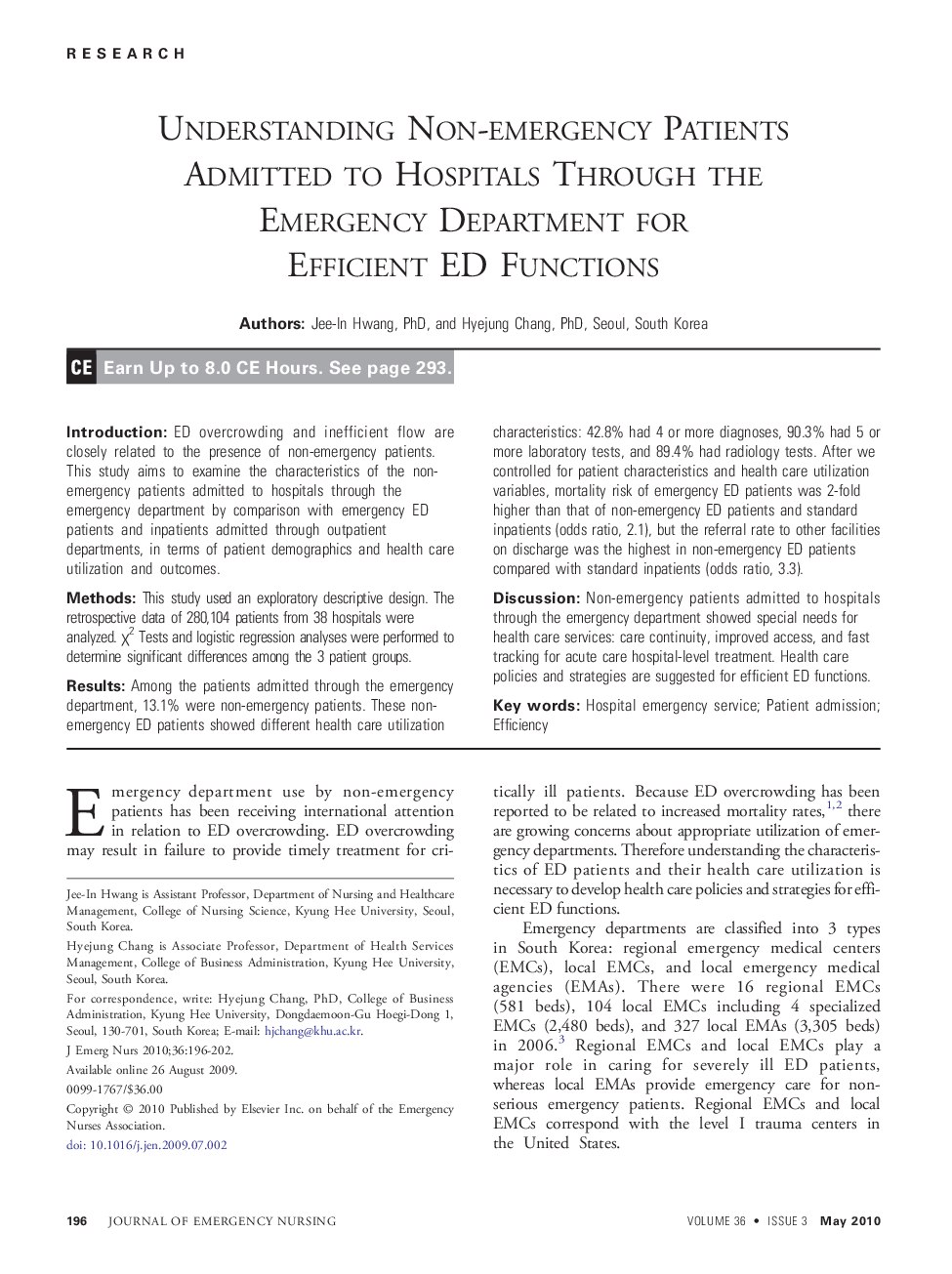| Article ID | Journal | Published Year | Pages | File Type |
|---|---|---|---|---|
| 2610906 | Journal of Emergency Nursing | 2010 | 7 Pages |
IntroductionED overcrowding and inefficient flow are closely related to the presence of non-emergency patients. This study aims to examine the characteristics of the non-emergency patients admitted to hospitals through the emergency department by comparison with emergency ED patients and inpatients admitted through outpatient departments, in terms of patient demographics and health care utilization and outcomes.MethodsThis study used an exploratory descriptive design. The retrospective data of 280,104 patients from 38 hospitals were analyzed. χ2 Tests and logistic regression analyses were performed to determine significant differences among the 3 patient groups.ResultsAmong the patients admitted through the emergency department, 13.1% were non-emergency patients. These non-emergency ED patients showed different health care utilization characteristics: 42.8% had 4 or more diagnoses, 90.3% had 5 or more laboratory tests, and 89.4% had radiology tests. After we controlled for patient characteristics and health care utilization variables, mortality risk of emergency ED patients was 2-fold higher than that of non-emergency ED patients and standard inpatients (odds ratio, 2.1), but the referral rate to other facilities on discharge was the highest in non-emergency ED patients compared with standard inpatients (odds ratio, 3.3).DiscussionNon-emergency patients admitted to hospitals through the emergency department showed special needs for health care services: care continuity, improved access, and fast tracking for acute care hospital-level treatment. Health care policies and strategies are suggested for efficient ED functions.
